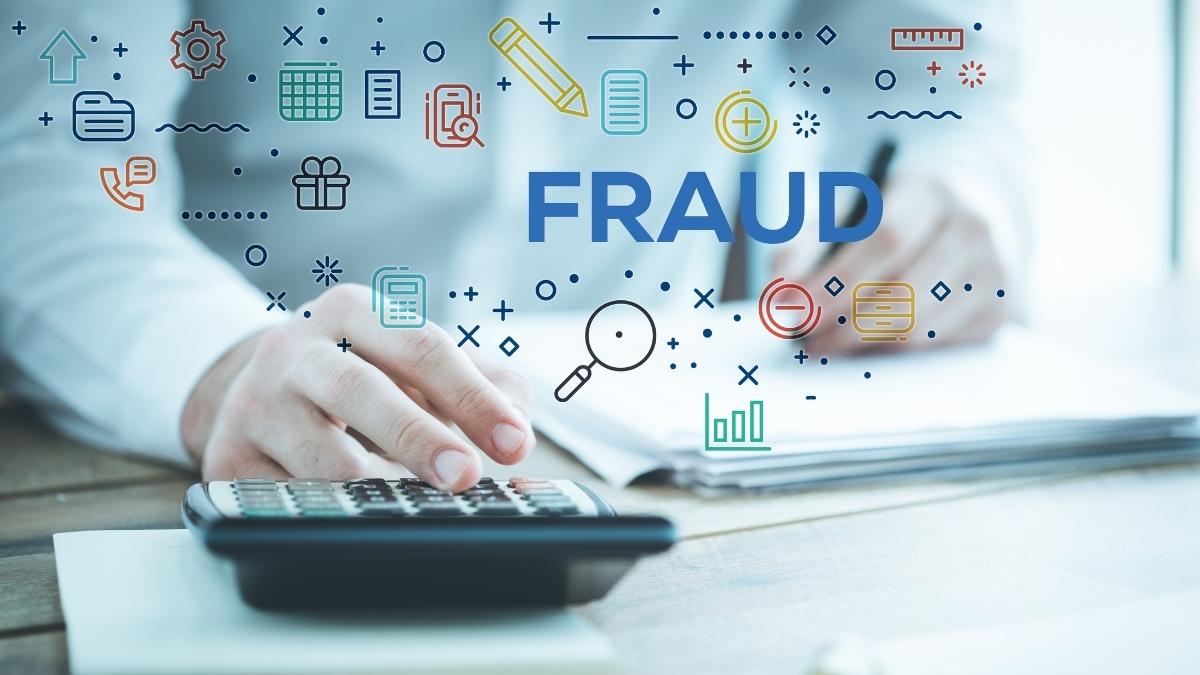
Return fraud happens when dishonest people abuse return policies. It’s a problem in the retail sector when companies are defrauded by utilizing their return policies.
Think again if you believe that fraudulent returns are not a problem. The hospitality and retail industries in America claimed that $33.9 billion worth of goods were impacted in 2019.
What Is Return Fraud?
Return fraud is a type of retail crime in which criminals attempt to return stolen or fraudulent merchandise to a store for a refund. Return fraud costs retailers billions of dollars each year and can take many different forms.
One common type of return fraud is called “wardrobing,” in which criminals purchase high-priced items with the intention of wearing them once and then returning them for a full refund. Wardrobing is often done with designer clothes or other items that retain their value well.
Another type of return fraud is called “friendly fraud,” in which consumers falsely claim that they never received an item they ordered, or that an item was defective, in order to get a refund.
Why Does Return Fraud Happen?
There are many reasons why return fraud happens. But the most common reason is because people want to get something for nothing. They think they can return an item they never bought, or they bought elsewhere, and get away with it. But retailers are catching on, and are taking steps to prevent return fraud.
Another reason people commit return fraud is because they need the money. They may have lost their job, or be facing other financial difficulties. So they see returning items they never bought as a way to get some quick cash.
Still, others do it simply because they can. They know there are loopholes in the system, and they take advantage of them. Whatever the reason, return fraud is a serious problem for retailers. And it’s one that’s only getting worse.
Types of Return Fraud Tactics
Small firms must be able to recognise return fraud if they want to reduce it. Here are the seven sorts of client refunds you should be aware of.
Price Switching
Price switching is a tactic used by some retailers to commit return fraud. Here’s how it works: a customer buys an item at full price and then returns it to the store. The store employee then switches the price tag on the item with one for a lower price. The customer gets a refund for the difference, and the store keeps the item.
While this may seem like a victimless crime, it actually costs retailers millions of dollars each year. And it’s not just big box stores that are affected; small businesses are hit hard by return fraud, too.
Return fraud is one of the many ways that dishonest people take advantage of retailers. But there are things that stores can do to combat it. For example, they can require customers to show ID when returning items, and they can keep better track of inventory.
Receipt Fraud
Receipt fraud is a type of return fraud where criminals create fake receipts in order to return merchandise they didn’t purchase. This type of fraud costs retailers millions of dollars each year.
Receipt fraud is relatively easy to commit. All a criminal needs is a blank piece of paper and a printer. They can then create a fake receipt for any item they want and return it to the store for a refund.
This type of fraud is difficult to prevent because it’s hard to spot a fake receipt. Retailers can combat receipt fraud by training their employees to be on the lookout for suspicious returns.
Open Box Fraud
Open box fraud is a tactic used by scammers to return stolen merchandise as if it were purchased at a store. The scammer will purchase an item from a store, then return it to the same store or a different store, claiming that the item was defective or damaged. The scammer will then request a refund or exchange for the item.
This type of fraud is difficult to detect because the items are usually returned in working condition. Scammers will often target high-ticket items such as electronics, which can be sold for a profit online. Open box fraud costs retailers millions of dollars each year and is one of the most common types of return fraud.
To avoid being scammed, retailers should carefully inspect all returned items and look for signs of tampering. Retailers should also require customers to show proof of purchase when returning an item.
Returning Stolen Items
When you return an item you stole from a store, you’re not getting your money back – you’re engaging in return fraud. Return fraud costs retailers billions of dollars every year, and it’s on the rise. There are a few different ways to commit return fraud, but the most common is to steal items from a store and then return them for a refund. This type of fraud is also known as “wardrobing.”
Another way to commit return fraud is to purchase items with stolen credit cards and then return the items for a refund before the credit card companies can discover the fraudulent charges. This type of fraud is called “friendly fraud.”
Returning stolen items is not a victimless crime – it costs retailers billions of dollars every year and it’s on the rise.
Employee Fraud
Employee fraud is a tactic of return fraud. Return fraud costs retailers billions of dollars each year. Employee fraud contributes to this problem by allowing criminals to return stolen merchandise for a profit.
Employees who commit return fraud do so by accepting returns without verifying the legitimacy of the purchase. They may also issue refunds without checking to see if the item was purchased with a stolen credit card. This type of fraud is especially costly during the holiday season, when return rates are highest.
To prevent employee fraud, retailers need to implement policies and procedures that ensure all returns are properly verified. They should also train their employees on how to spot suspicious activity and report it to management. By taking these steps, retailers can help reduce the amount of return fraud that occurs each year.
Switch Fraud
Return fraud is a type of crime in which consumers return stolen merchandise to a store for a refund. Often, the merchandise is switched out for lower-priced items before being returned. This type of fraud costs retailers billions of dollars each year.
While some people may view switch fraud as a victimless crime, it actually hurts both retailers and consumers. Retailers lose money from fraudulent returns, and honest consumers end up paying higher prices to make up for the losses.
Switch fraud is relatively easy to commit, but there are ways that retailers can combat it. For example, stores can require ID at the time of return, or they can put security tags on high-priced items. By taking these precautions, retailers can help deter criminals and protect their bottom line.
Wardrobing or Free Renting
Wardrobing or free renting is a tactic of return fraud. This is when a person buys an item, uses it for a short period of time, and then returns it for a full refund. The item is then resold or given away.
This type of fraud is on the rise due to the proliferation of online shopping and the ease with which items can be returned. It is also difficult for retailers to detect, as there is often no damage to the item and no receipt required for returns.
Wardrobing or free renting can have a significant impact on a retailer’s bottom line. It can also lead to higher prices for consumers, as retailers attempt to recoup their losses.
If you are considering returning an item to a retailer, be sure that you are doing so within their return policy timeframe and that you have all of the necessary documentation.
Price Arbitrage
Price arbitration is a popular technique that online retailers use to inaccurately report the prices of their products. By using this tactic, they are able to charge higher prices for their products and receive a higher return on investment. This type of fraud is difficult to detect and can be costly for businesses who are not aware of it. Online shoppers should be cautious when shopping on websites that use price arbitration and only purchase from reputable retailers.
How to Identify Fraudulent Returns When They Happen
Recognizing return fraud when it occurs is crucial. Here are some indicators of return fraud to watch out for. You can stop losing money in your retail business by avoiding these warning signs. And watch out for dishonest people who bring back stolen goods.
1. A Jump In The Number of Returns.
A recent jump in the number of returns is a sign that fraudulent returns are on the rise. This is a problem for businesses because it can erode profits and increase costs. There are a few things that businesses can do to combat this problem.
One way to combat fraudulent returns is to require a receipt for all returns. This will make it more difficult for people to return items they did not purchase from your store. You can also implement a return policy that requires ID for all returns. This will make it more difficult for people to return items they did not purchase from your store. Finally, you can train your employees to be on the lookout for signs of fraud. If they see anything suspicious, they can report it to management.
By taking these steps, you can help reduce the number of fraudulent returns and protect your business from loss.
2. Watch for Serial Returners.
Every business that accepts returns is at risk for fraud. Return fraud costs U.S. retailers billions of dollars every year. There are many types of return fraud, but one of the most common is serial returners.
Serial returners are people who make a habit of returning items they’ve purchased. They may do this for different reasons: to get a refund, to exchange the item for something else, or because they’re not happy with the product. Whatever the reason, serial returners can be a problem for businesses.
- There are a few things businesses can do to watch for serial returners and prevent fraud:
- Keep track of customer purchase and return history. This can be done electronically with the purchase and return records.
- Monitor returns closely. If someone is returning a lot of items, it may be worth investigating further.
3. Watch for Inconsistent Details
When it comes to returns, there are a few things that can be tell-tale signs of fraud. First and foremost, watch for any inconsistencies in the details of the return. If the buyer is claiming to have purchased an item that was never actually in stock, or if the return is for a significantly different amount than what was originally paid, these are both red flags.
Another thing to look out for is if the return is being made after an unusually long amount of time has passed. In most cases, returns are made within a few days or weeks of purchase. If someone is trying to return an item months later, with no clear explanation as to why, that could be cause for suspicion.
Finally, be on the lookout for anything else that just doesn’t seem quite right about the situation.
4. Store Location Matters
When it comes to identifying fraudulent returns, store location matters. That’s because different stores tend to see different types of return fraud. For example, retail stores located in high-traffic areas are more likely to see “friendly fraud,” where customers return items they never purchased or used. Meanwhile, stores located in rural areas are more likely to see “wardrobing,” where customers purchase items with the intention of using them for a short period of time and then returning them.
Of course, this is not to say that all returns are fraudulent. But knowing which type of fraud is more common in your store can help you be on the lookout for suspicious activity.
5. Keep An Eye On The Holidays
As the holidays approach, it’s important to keep an eye out for fraudulent returns. Every year, millions of dollars are lost to return fraud. By being aware of the signs of a fraudulent return, you can help protect yourself and your business.
There are several red flags that can indicate a fraudulent return:
- The item is returned without a receipt or proof of purchase.
- The item is returned after the holiday season has ended.
- The item is returned without its original packaging or with damaged packaging.
- The item is significantly cheaper than the original purchase price.
- The customer is excessively friendly or overly apologetic.
If you see any of these red flags, be sure to take extra precautions when processing the return.
Tips for Preventing Return Fraud at Your Business
Being proactive is key to successful fraud prevention. Here are some suggestions for improving your return policy.
6. Offer store credit instead of cash refunds
If you’re a business owner, you know that returns are inevitable. But what you might not know is that return fraud is also a reality. Return fraud costs businesses billions of dollars each year, and it’s on the rise. One way to prevent return fraud at your business is to offer store credit instead of cash refunds.
Here’s why: when a customer returns an item for store credit, they can only use that credit at your store. But if you issue a cash refund, the customer can take the money and spend it anywhere. With store credit, you’re essentially giving the customer a gift card that can only be used at your business. And because gift cards can’t be easily converted to cash, they’re much less likely to be used in fraudulent returns.
7. Make your return policy clear
When it comes to returns, clarity is key in preventing return fraud at your business. A clear and concise return policy will help reduce the risk of fraudulent returns, as well as help to manage customer expectations. Here are a few tips to help you create a clear return policy:
- Keep it short and sweet: The shorter and simpler your return policy is, the easier it will be for customers to understand.
- Be specific: Include all the important details in your policy, such as what items are eligible for return and what is the timeframe for returns.
- Use positive language: Use language that encourages customers to follow your policy, such as “We’re happy to process your return within 30 days of purchase.”
8. Consider a restocking fee
When it comes to return fraud, many businesses are inclined to think that they are powerless against it. After all, once a customer has made a purchase, there is no way to force them to keep the product. However, there are steps businesses can take to deter return fraudsters and one of those steps is charging a restocking fee.
By definition, return fraud is “the act of returning merchandise purchased from a store or e-commerce site with the intention of receiving a refund for the full purchase price without actually having paid for the merchandise.” Return fraud costs retailers billions of dollars every year and it is on the rise.
One way businesses can combat return fraud is by charging a restocking fee. This fee discourages customers from returning items simply because they do not like them or because they found a better deal elsewhere.
9. Track shipments
Many businesses lose money each year to return fraud.
One way to help prevent return fraud at your business is by tracking shipments.
By tracking shipments, you can ensure that items are being returned by the same person who purchased them.
This helps to prevent people from returning stolen or damaged items that they did not purchase from your store.
Tracking shipments also allows you to keep track of inventory and ensure that items are received in a timely manner.
This can help you avoid situations where items are returned because they are no longer in stock or because they arrived too late.
Tracking shipments is a simple and effective way to help prevent return fraud at your business.
By tracking shipments, you can help to protect your business and its bottom line.
10. Require proof of purchase
A new study shows that requiring proof of purchase could help prevent return fraud at your business.
According to the National Retail Federation, return fraud costs retailers billions of dollars each year. Return fraud includes everything from returning stolen merchandise to using counterfeit receipts.
One way to help prevent return fraud is to require proof of purchase. This means that customers would need to present a receipt or some other form of documentation in order to return an item.
There are a few different ways that you can require proof of purchase. For example, you could have a sign at the returns desk that says “No Receipt, No Return” or you could require customers to show their ID when they make a return.
Requiring proof of purchase is a simple way to help reduce return fraud at your business.
What Happens If When Someone Commits Return Fraud?
If someone commits return fraud, they may be subject to a number of consequences. For example, they may be required to pay restitution to the store or company from which they committed the fraud. They may also be subject to criminal charges, and if convicted, could face jail time. Additionally, they may be placed on a list of known offenders that is shared with other retailers, making it more difficult for them to commit return fraud in the future.
Is Refund Scamming Illegal?
With the growth of online shopping, refund scams have become more common. But what exactly is a refund scam, and is it illegal?
A refund scam is when a person pretends to be a legitimate customer and orders a product or service with the intention of getting a refund. They may do this by using a fake email address or by providing false information when they sign up for the service.
In most cases, refund scams are not illegal. However, if you are caught doing it, you may be subject to civil or criminal charges. In some cases, you may also be banned from using the service that you were trying to get a refund.
So while refund scams may not always be illegal, they can still get you into trouble. If you’re thinking about doing one, it’s best to think twice before proceeding.




One Comment